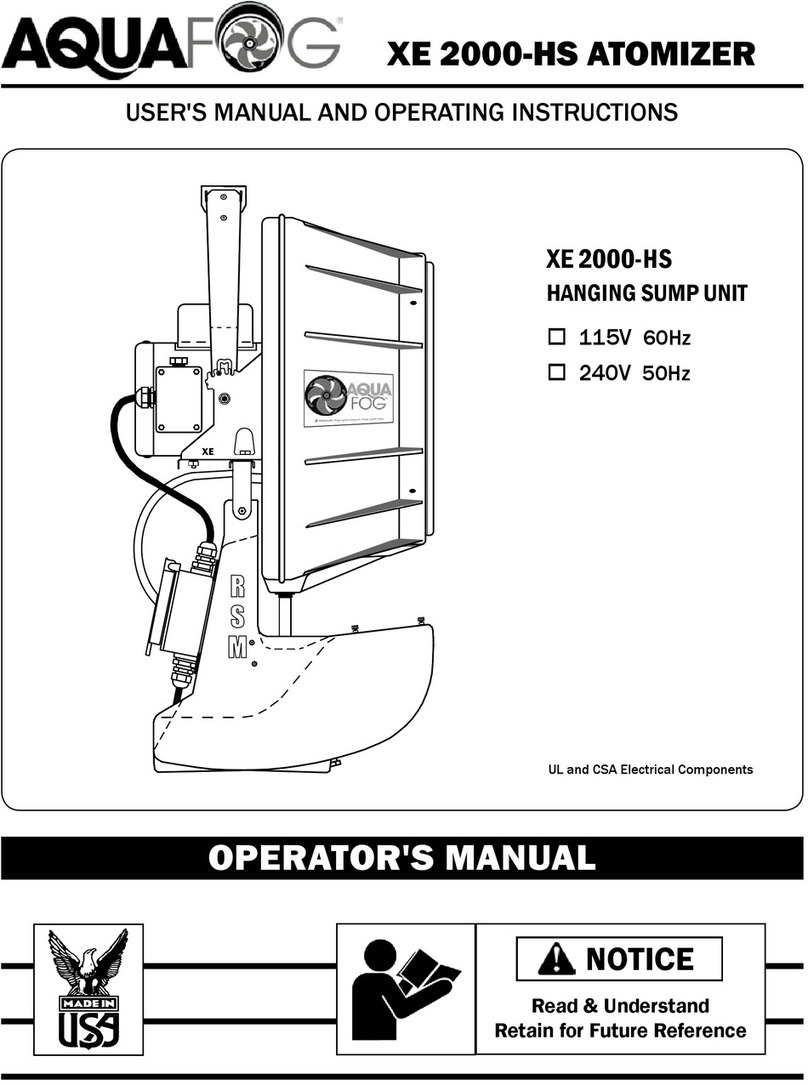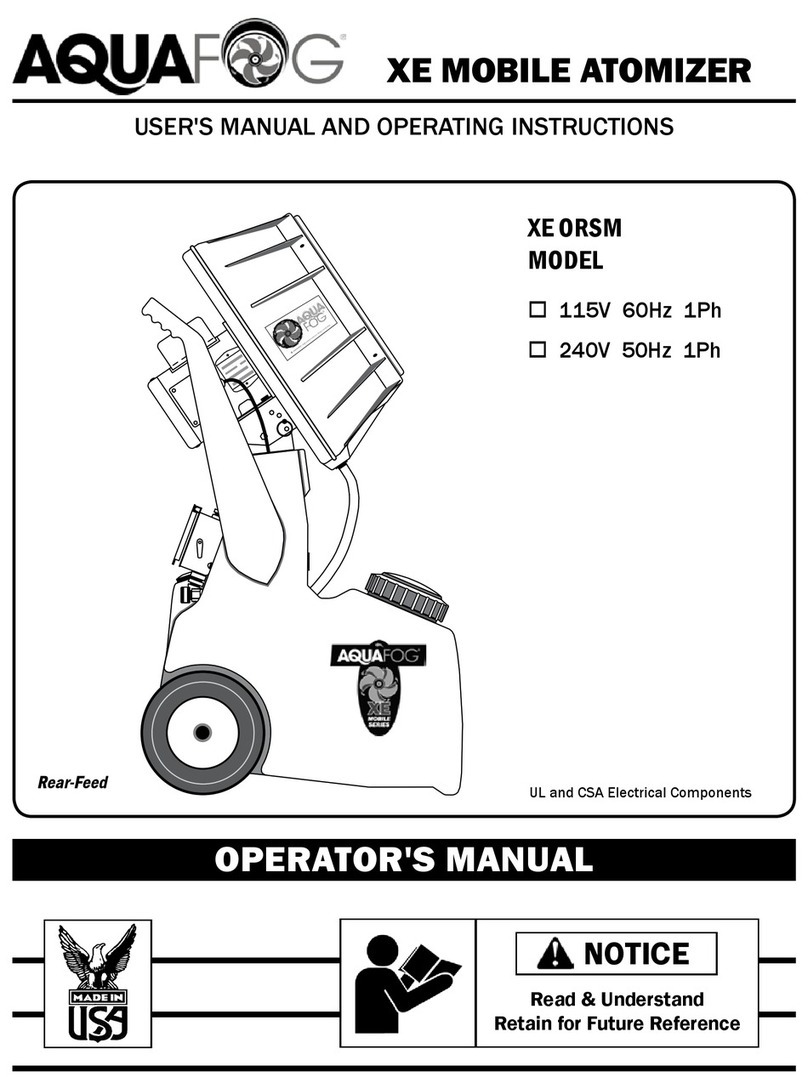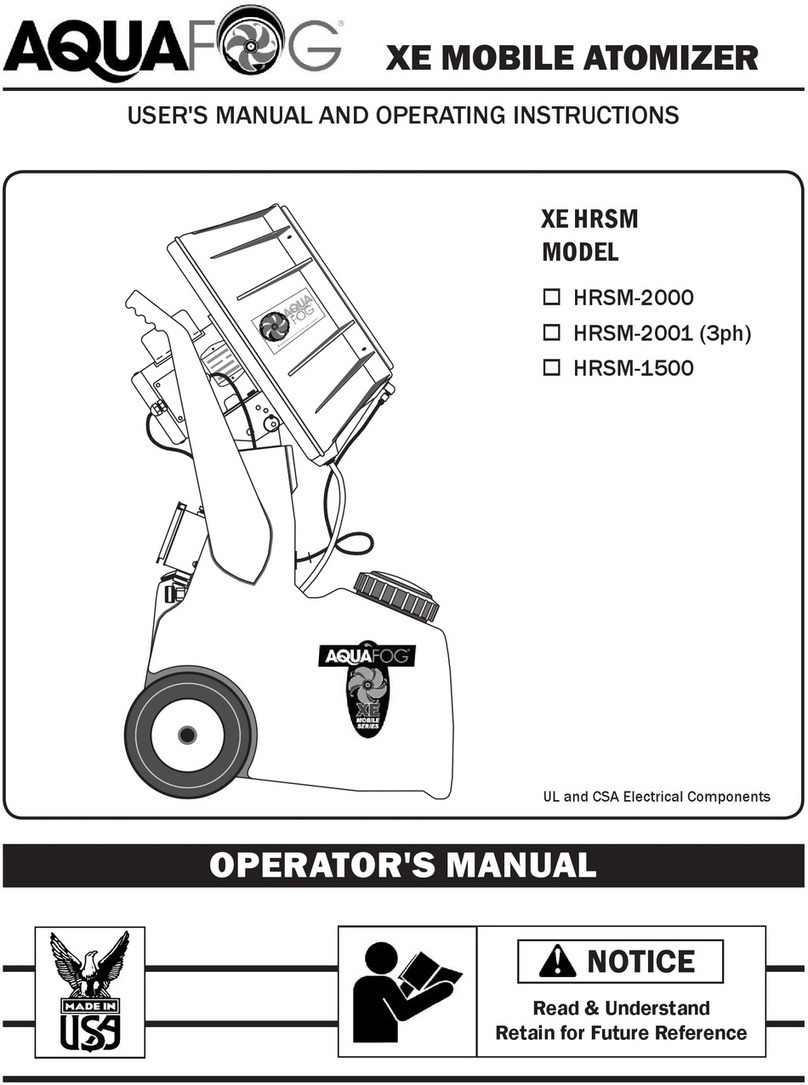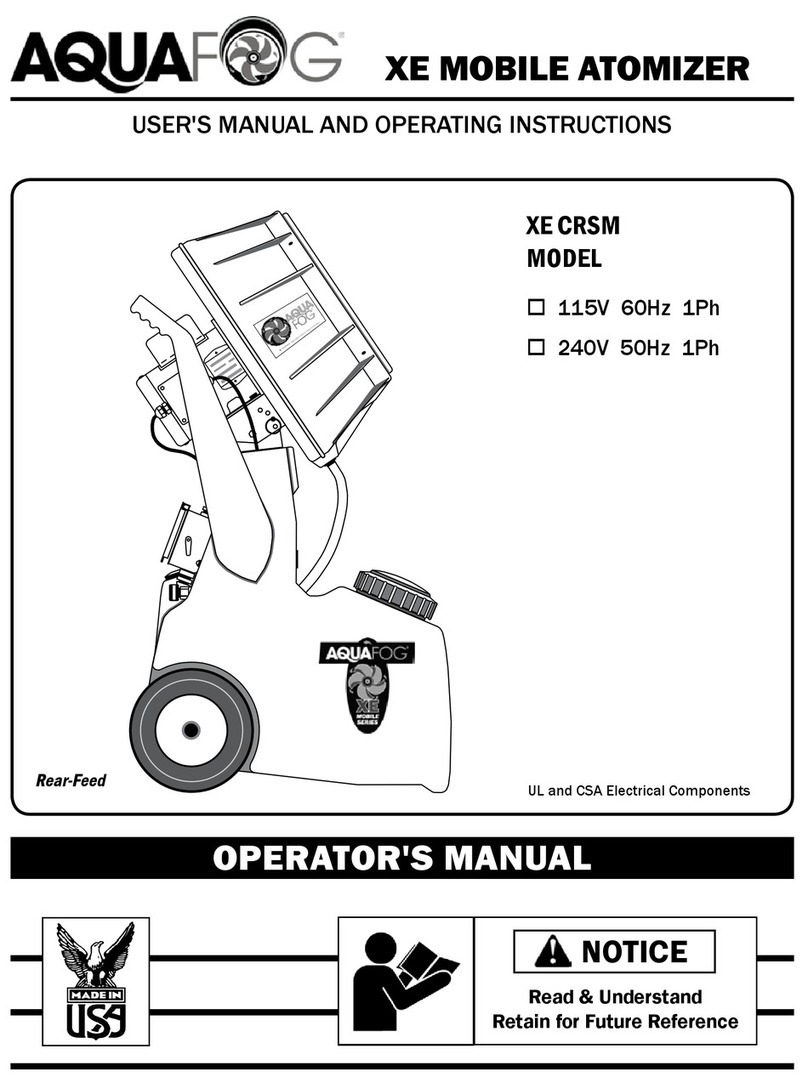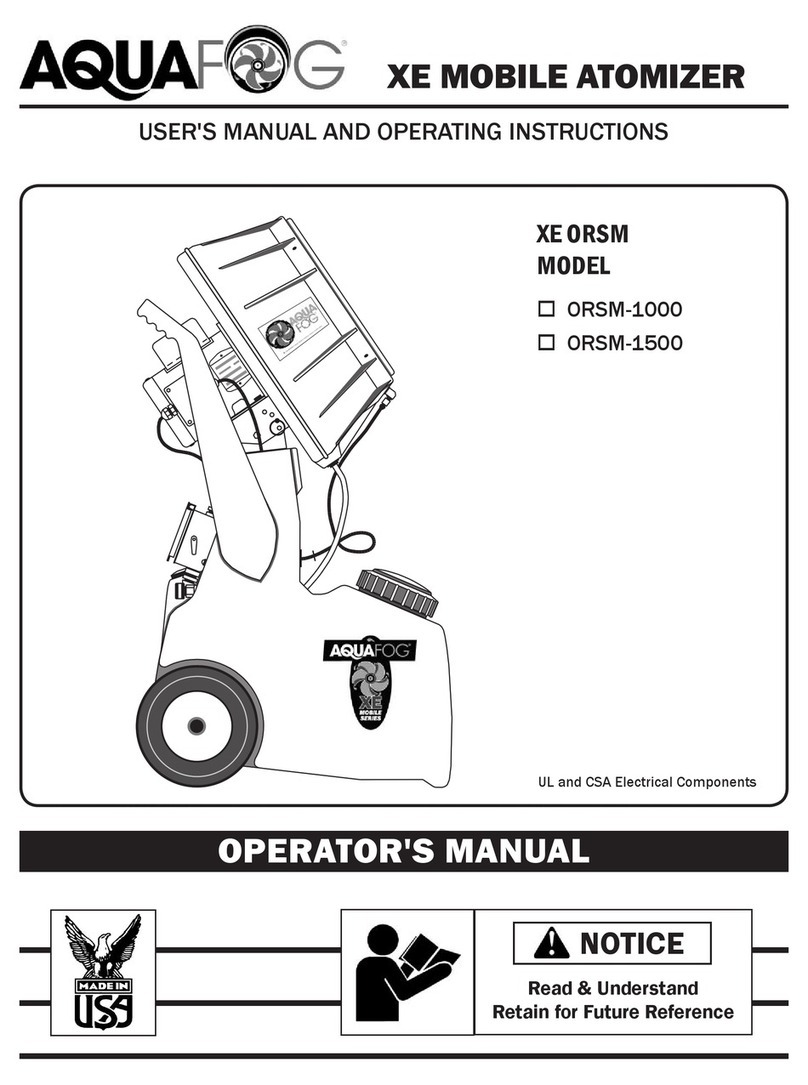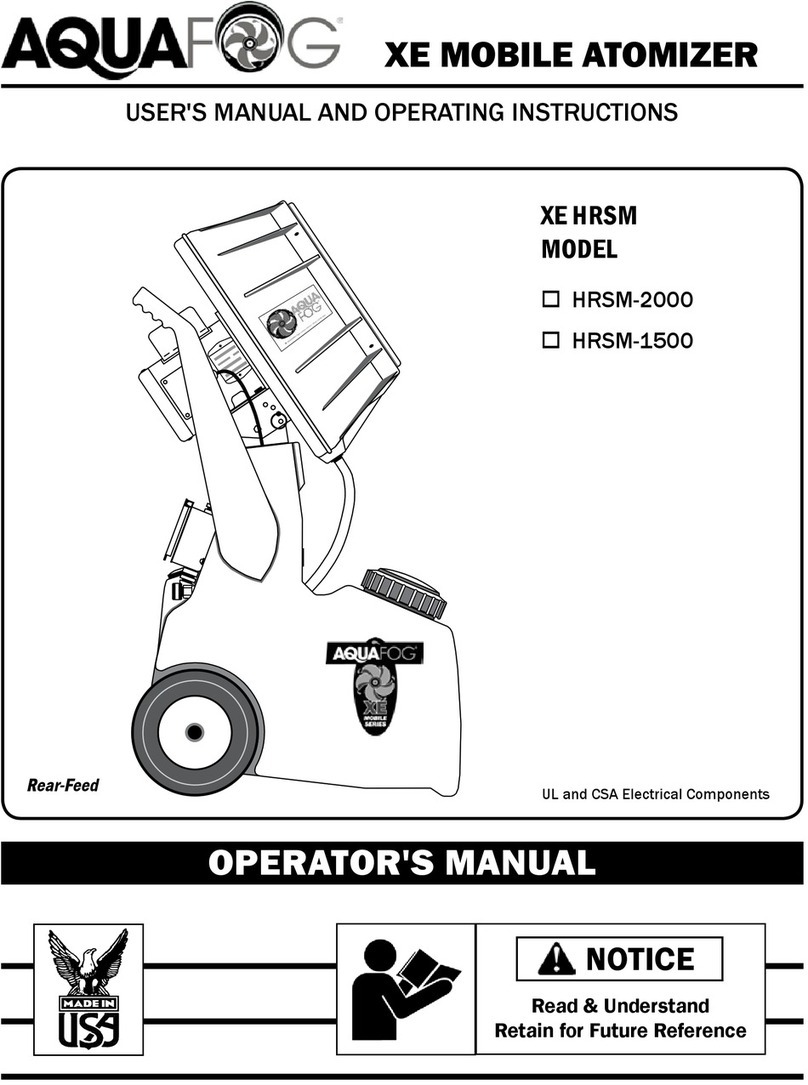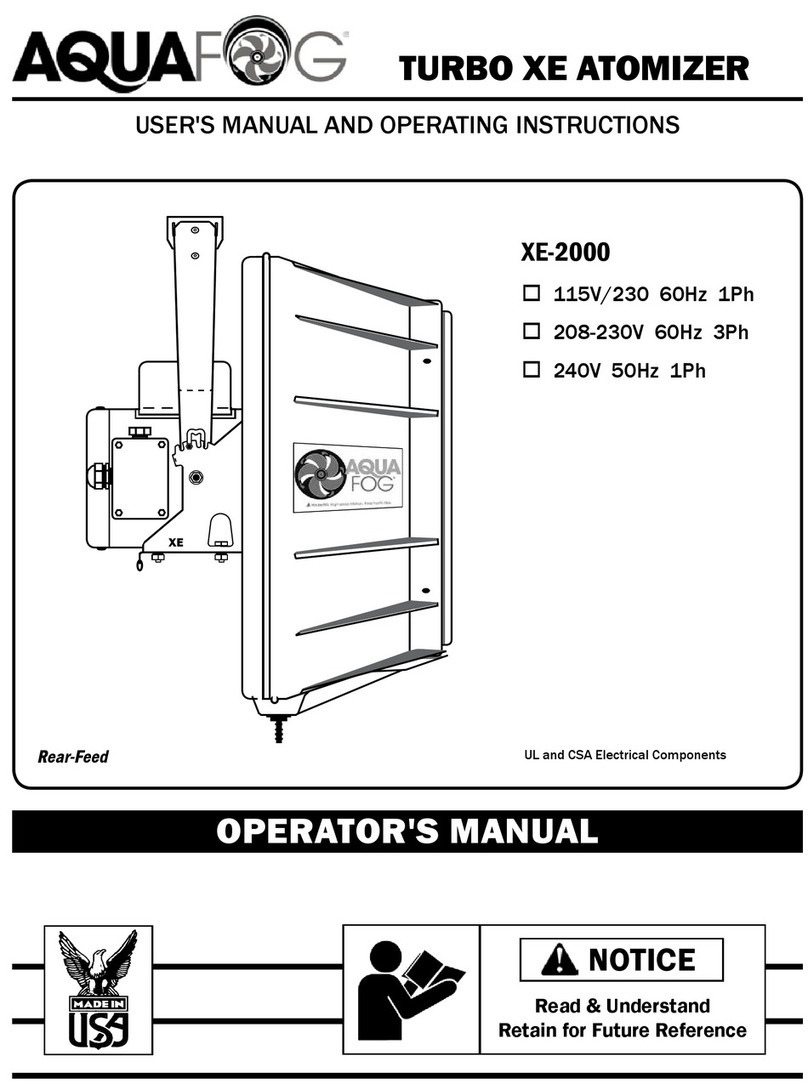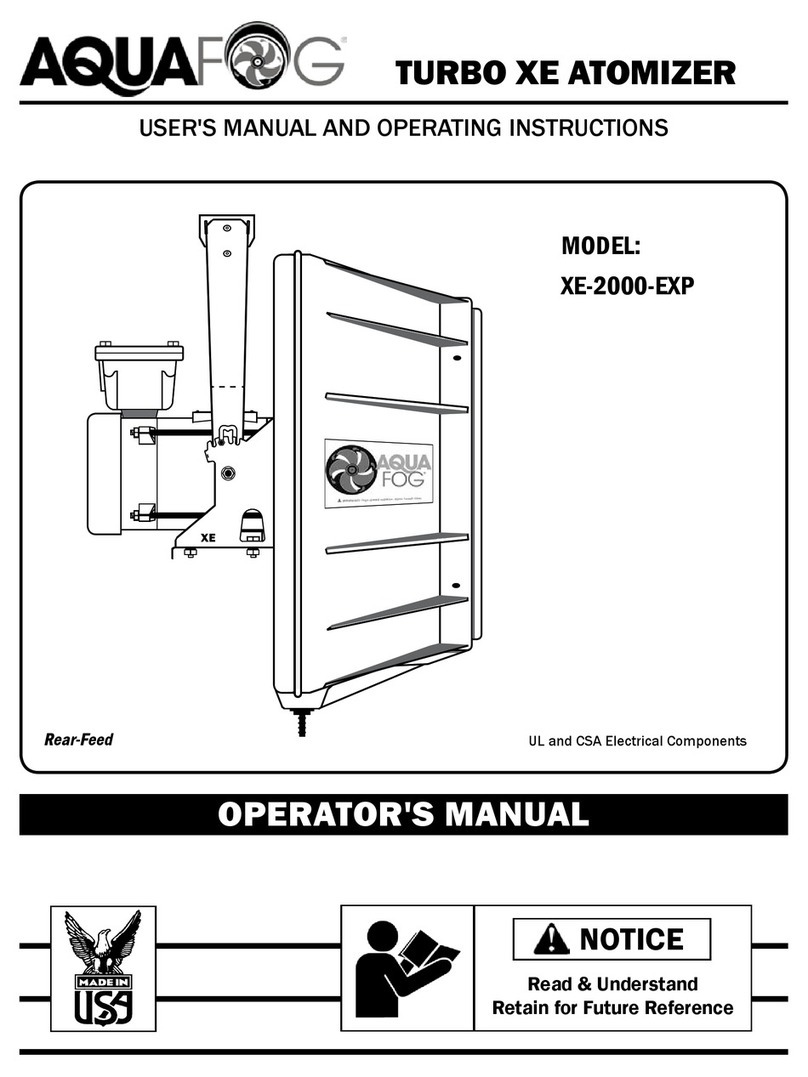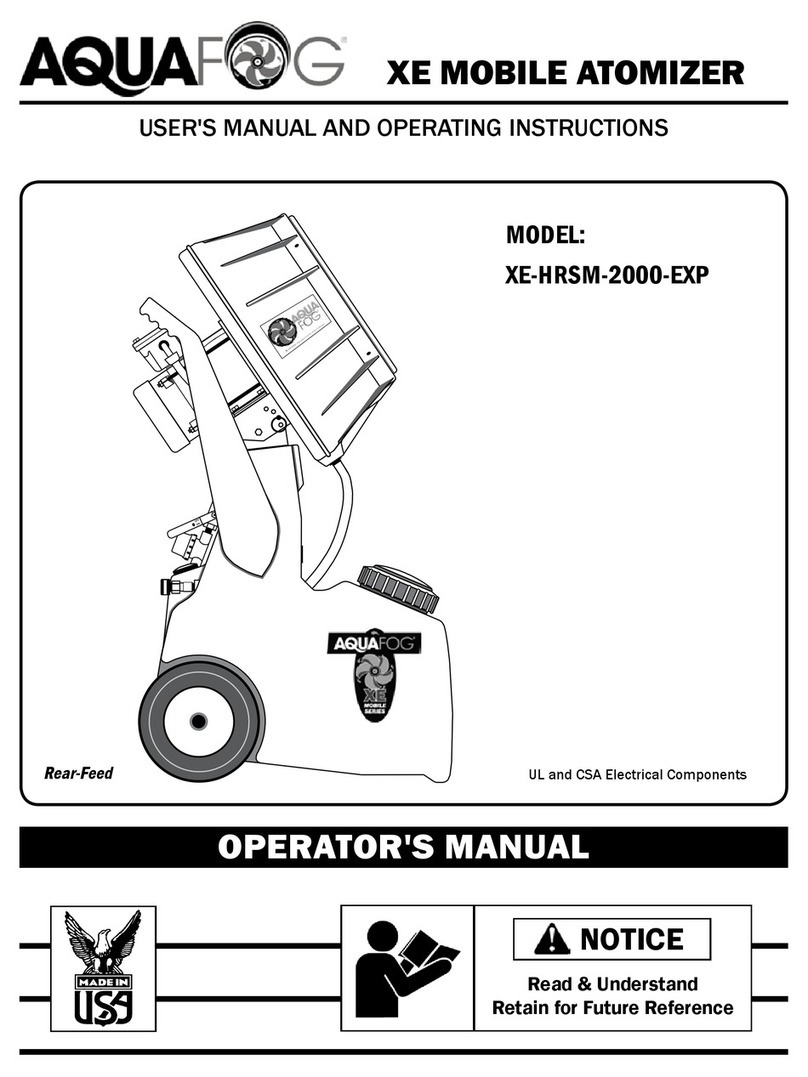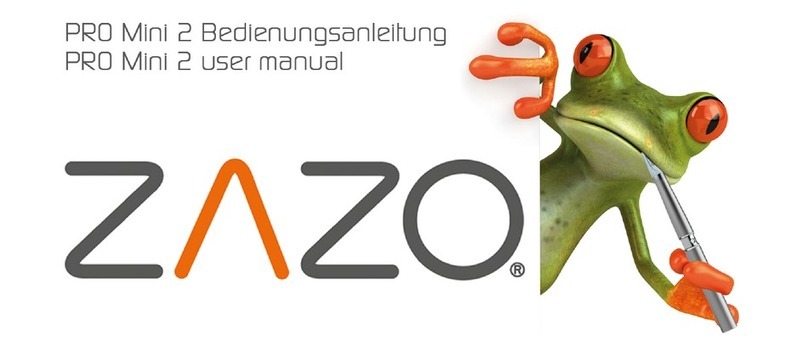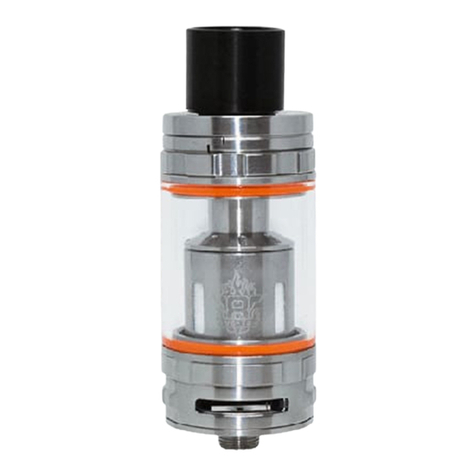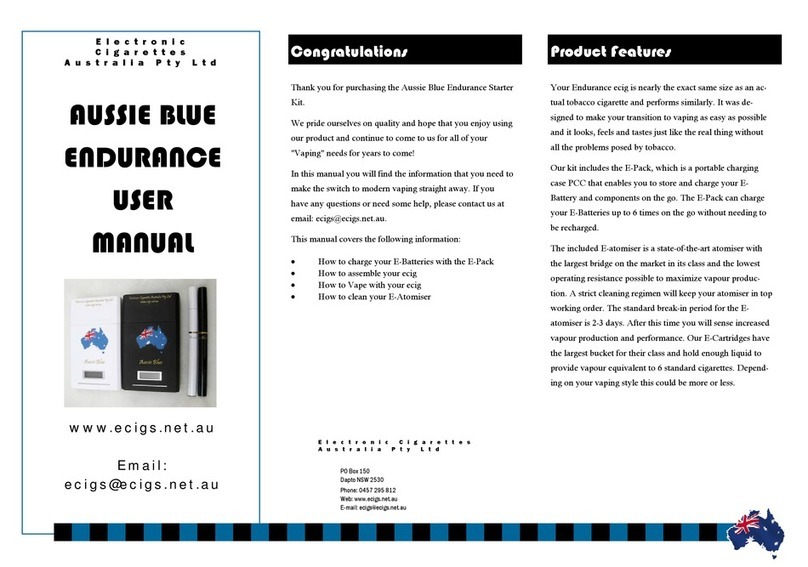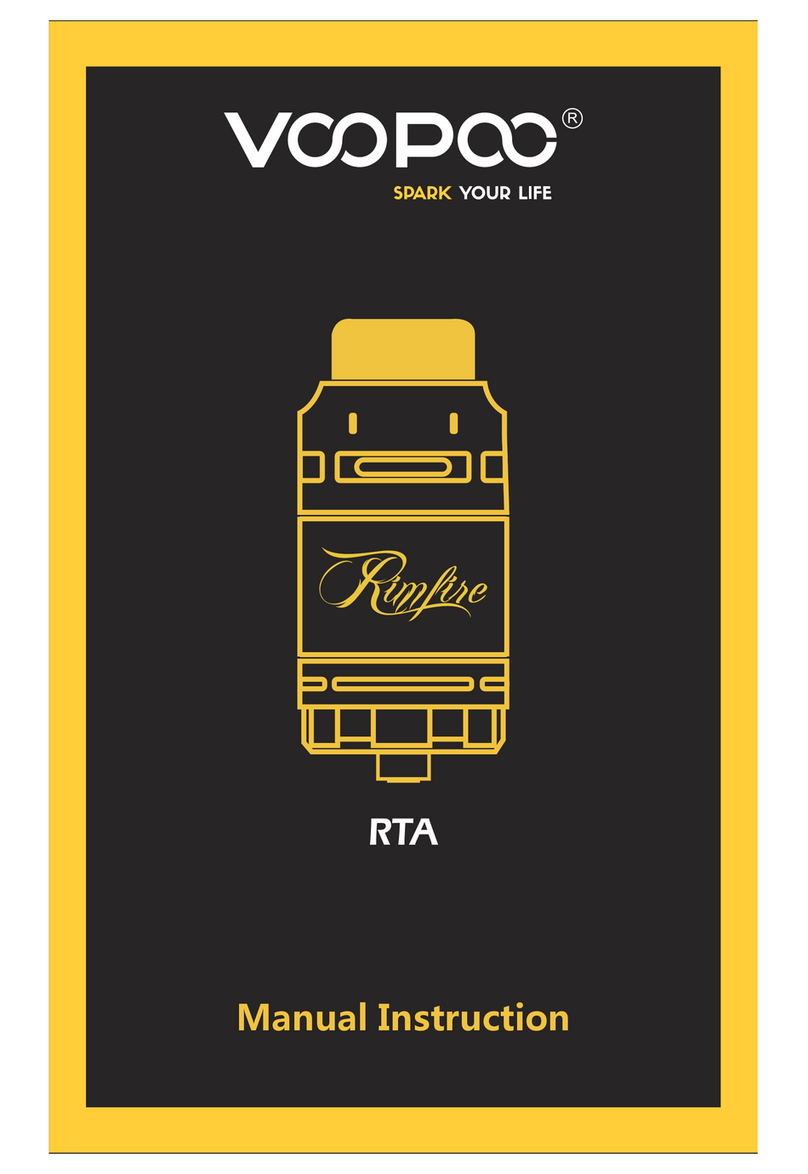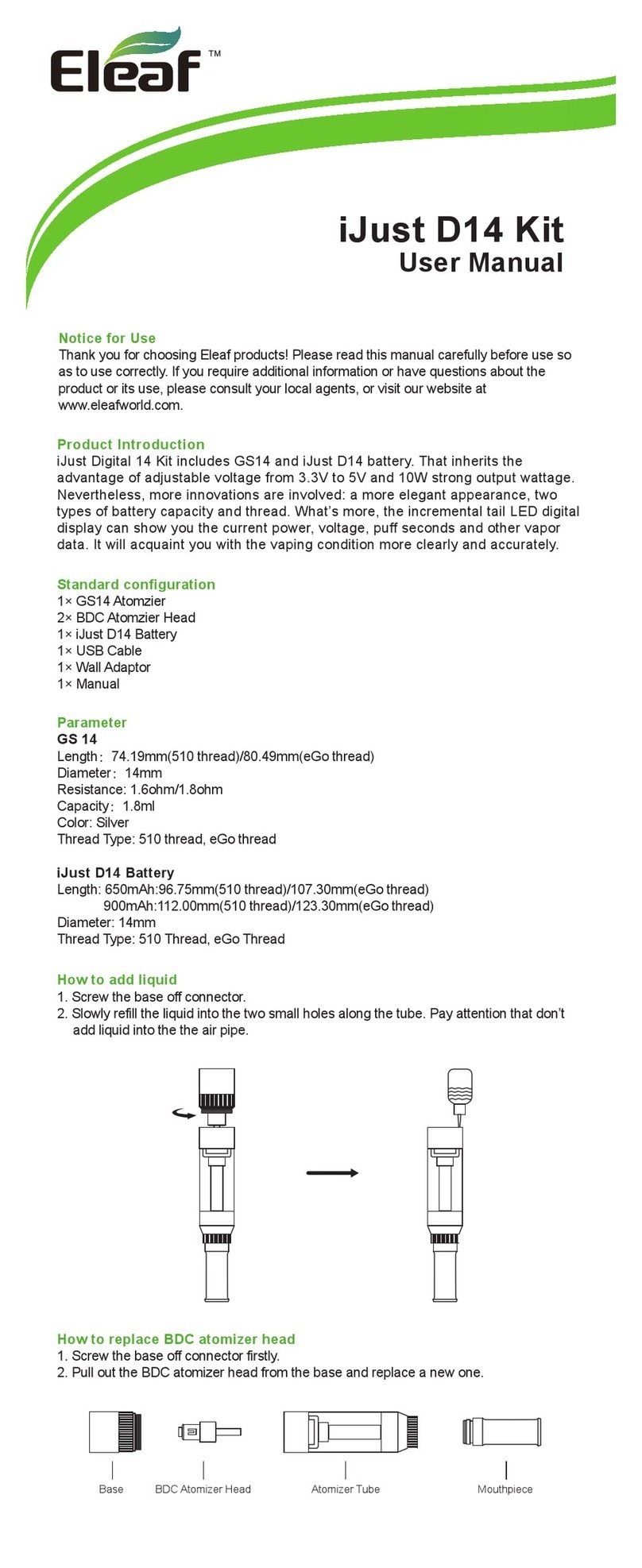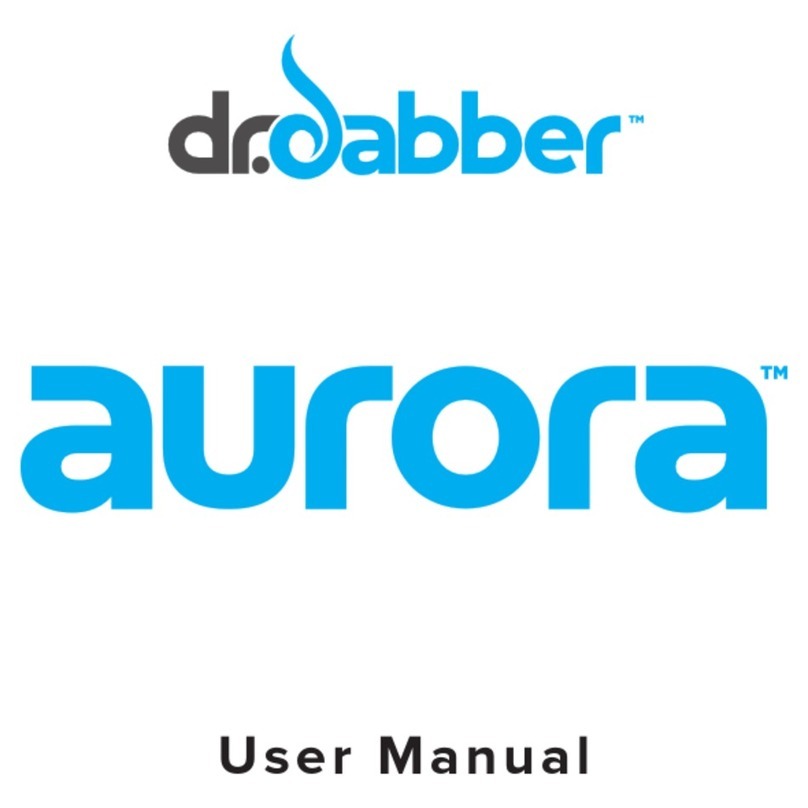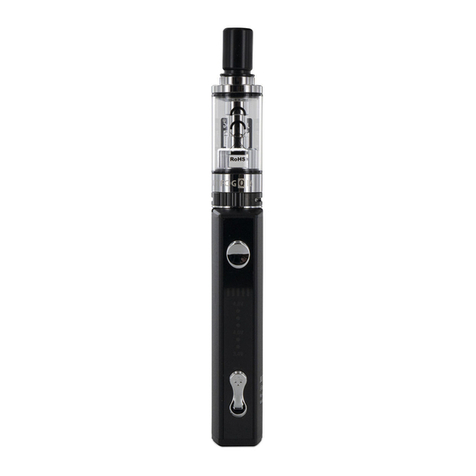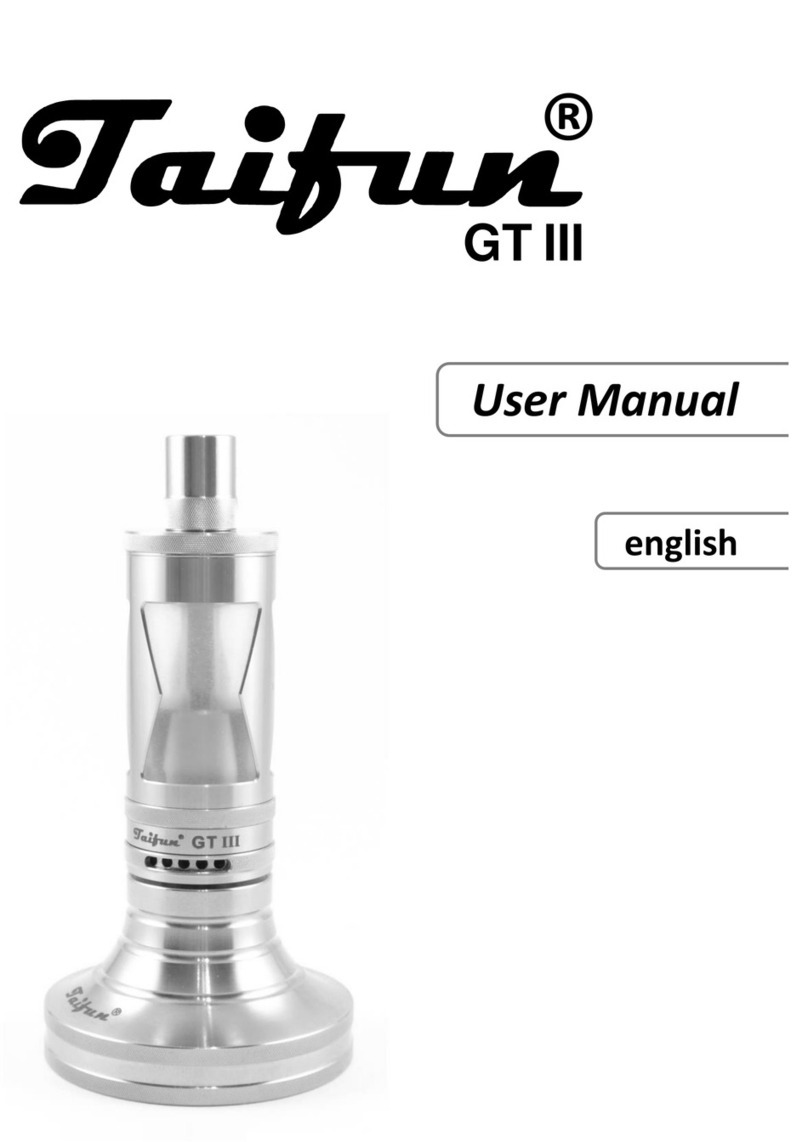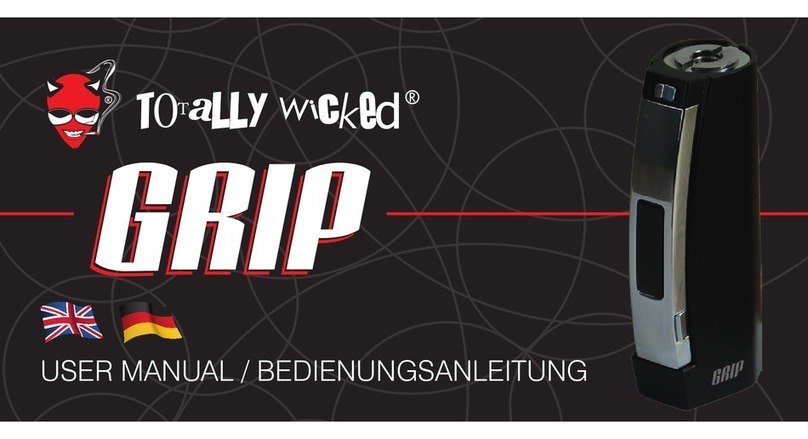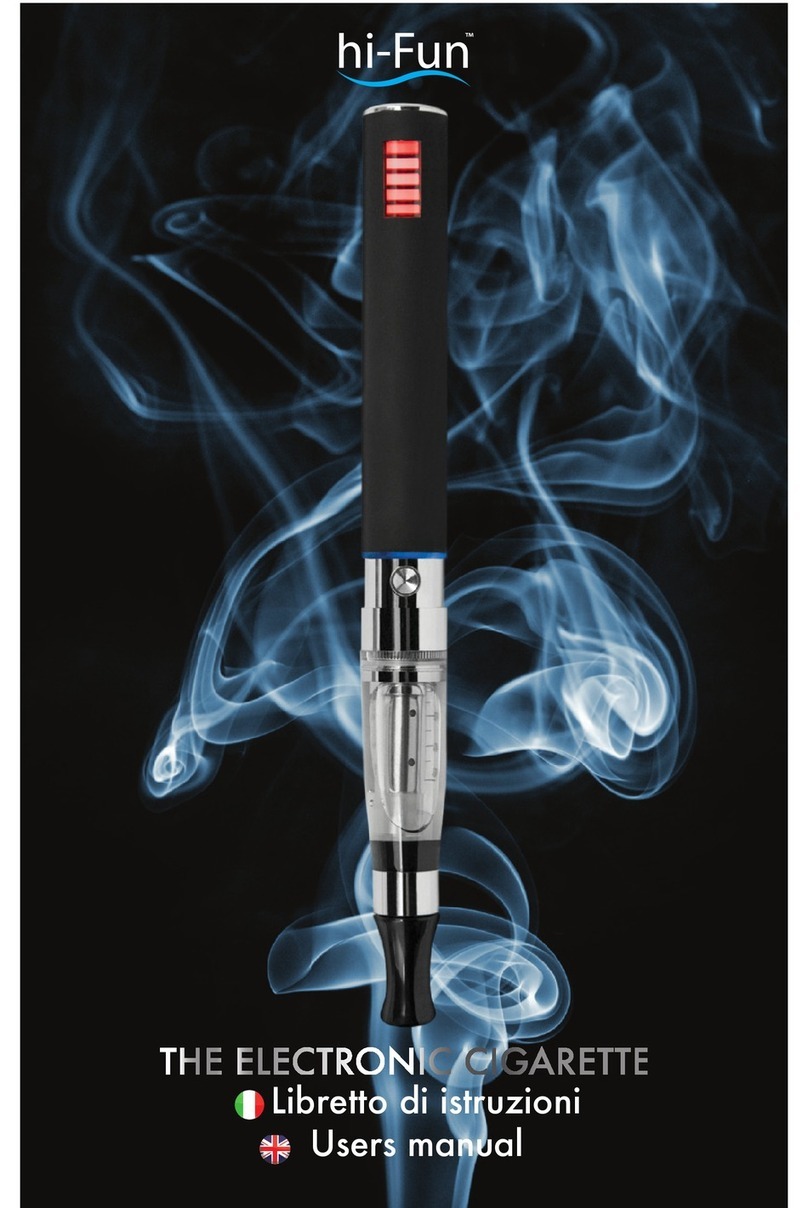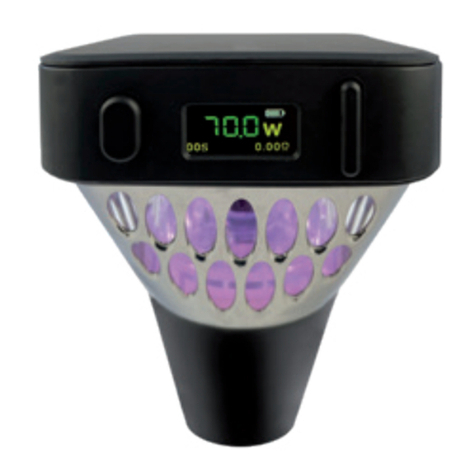
INITIAL START-UP
1. Fan Blade Does Not Spin
2. No Fog but Blade Spins
3. Hard To See Fog Output
NO FOG
1. Stiff/Locked Motor Shaft
2. Bad Motor
3. Clogged Flowmeter Panel
4. Clogged In-Line Strainer
5. Clogged Water Solenoid
6. Clogged SST Feed Tube
POOR QUALITY FOG
1. Clogged Blade Assembly
2. Misaligned Feed Tube
3. Stiff Motor Shaft
4. Loose Blade Assembly
FAN DOES NOT SPIN
1. Stiff/Locked Motor Shaft
2. Bad Motor
3. Bad Controller
MOTOR OVERHEATING
1. Stiff/Locked Motor Shaft
Issue
Corrective Action
TROUBLESHOOTING
1. Check power supply. If using a controller, try bypassing it and plug unit
directly into a power outlet. Check for a faulty power cord.
2. Open Flowmeter’s needle valve [counterclockwise]. Check for water
pressure starting at the source and temporarily disconnect water line
ttings to locate the issue. If using a controller and the water solenoid is
not opening, check the power from controller to solenoid.
3. As fog evaporates, it becomes transparent. Dry air and propulsion
evaporates fog quickly. As humidity increases, evaporation slows and fog
becomes more apparent. A dark background helps to see the output.
1. Remove blue plugs and lubricate motor bearings while manually rotating
shaft back and forth until loose.
2. If motor smells, doesn’t start (with a direct power supply) or shaft will not
loosen up, replace motor.
3. Remove valve and clean. If problem reoccurs, perform a thorough
cleaning inside the owmeter body.
4. Remove strainer cap, screen, and O-ring. Flush clean with water.
5. Remove the top clip and disassemble the valve’s brass body for cleaning.
6. Remove Feed Tube and ream with a small wire. Clean and reinstall.
1. Remove and clean out the rear reservoir and the blades’ passageways.
2. Adjust feed tube so its water stream ows into the blades rear reservoir.
3. Remove blue plugs and lubricate motor bearings while manually rotating
shaft back and forth until loose.
4. If the blade can spin without motor shaft, reposition the blade and tighten
the setscrew on the at of the shaft, replace assembly if necessary.
1. Remove blue plugs and lubricate motor bearings while manually rotating
shaft back and forth until loose.
2. If motor smells, doesn’t start (with a direct power supply) or shaft will not
loosen up, replace motor.
3. Check controller for loose connections, test unit’s motor and controller
independently with a direct power supply for process of elimination.
1. Remove blue plugs and lubricate motor bearings while manually rotating
shaft back and forth until loose.
